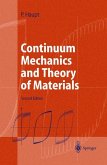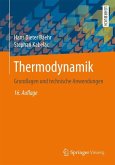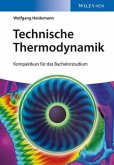Thermodynamics is the much abused slave of many masters - physicists who love the totally impractical Carnot process, - mechanical engineers who design power stations and refrigerators, - chemists who are successfully synthesizing ammonia and are puzzled by photosynthesis, - meteorologists who calculate cloud bases and predict föhn, boraccia and scirocco, - physico-chemists who vulcanize rubber and build fuel cells, - chemical engineers who rectify natural gas and distil f- mented potato juice, - metallurgists who improve steels and harden surfaces, - - trition counselors who recommend a proper intake of calories, - mechanics who adjust heat exchangers, - architects who construe - and often misconstrue - ch- neys, - biologists who marvel at the height of trees, - air conditioning engineers who design saunas and the ventilation of air plane cabins, - rocket engineers who create supersonic flows, et cetera. Not all of these professional groups need the full depth and breadth of ther- dynamics. For some it is enough to consider a well-stirred tank, for others a s- tionary nozzle flow is essential, and yet others are well-served with the partial d- ferential equation of heat conduction. It is therefore natural that thermodynamics is prone to mutilation; different group-specific meta-thermodynamics' have emerged which serve the interest of the groups under most circumstances and leave out aspects that are not often needed in their fields.
From the reviews:
"The book is divided in twelve chapters which describe the fundamentals of thermodynamics and many applications, mainly in machines or chemical reactions. ... The whole book is also illustrated with many figures and many historical notes concerning the pioneers of the thermodynamics. Engineers will find here an historical complete introduction of thermodynamics going to modern developments. Mathematicians involved in partial differential equations (pde) will find the physical and historical context which leads to the famous heat or wave equations, among other pdes." -- Alain Brillard, Zentralblatt MATH, Vol. 1168, 2009
"The book is divided in twelve chapters which describe the fundamentals of thermodynamics and many applications, mainly in machines or chemical reactions. ... The whole book is also illustrated with many figures and many historical notes concerning the pioneers of the thermodynamics. Engineers will find here an historical complete introduction of thermodynamics going to modern developments. Mathematicians involved in partial differential equations (pde) will find the physical and historical context which leads to the famous heat or wave equations, among other pdes." -- Alain Brillard, Zentralblatt MATH, Vol. 1168, 2009









